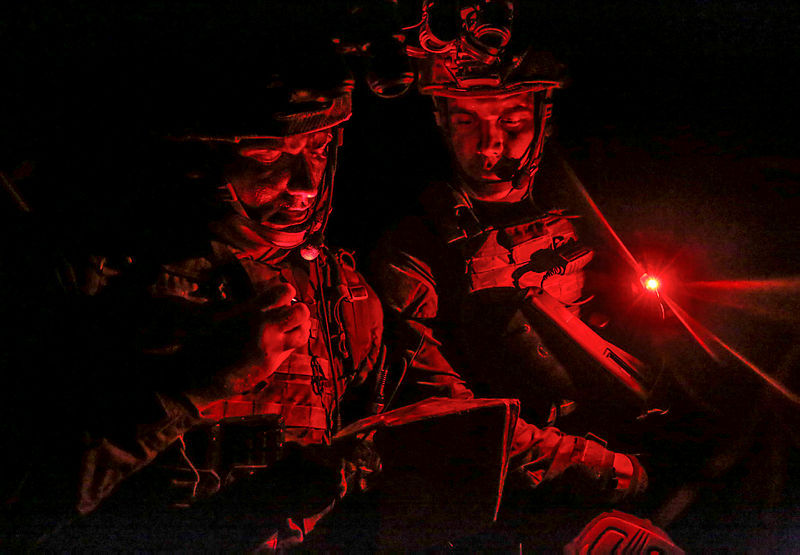To deal with a big problem, let’s think small
Posted By Andrew Carr on July 5, 2019 @ 06:00

Once again Peter Jennings has started an important debate [1]: to white paper or not to white paper? I am persuaded by Andrew Davies’ cautious counter [2].
The heart of this discussion is what problem another defence white paper (DWP) is meant to solve. Is it diagnosis or prescription? Do we need to better understand the problem, or do we know the problem and instead need to find ways to respond?
While conscious that time is probably not on our side, I would suggest the issue is still diagnosis. China may be a threat, but, for Australia, what kind of threat is it exactly? The US may be recalcitrant, but to what end? What can, and can’t, we do alone? What are others in the region doing? What does new technology mean for this contest?
A white paper is not a diagnostic tool. Nor is it designed to be, despite the growing length of the regional security review essay at the start. Such documents work best when the problem set is clear and we need expert military judgement to decide how best to prescribe resources.
While many compare today to the late 1960s—when genuine uncertainty gripped policymakers, perhaps a better analogue is the period between 1972, when we committed to defending Australia, and 1987, when the defence of Australia policy [3] was put in place. Today too we seem to know what broad direction we want to go in, but not enough about the kinds of challenges we face, or what we will need to do to get there.
In the 1970s and 1980s, this diagnostic debate turned bitter. Extremely bitter. One historian of the Department of Defence has described it [4] as a ‘civil war’ both within the services and between those in and out of uniform. The diarchy, so hard won, was at risk of breaking down.
It would be a mistake to say the 1987 white paper solved this debate. Just as we should be dubious another DWP could solve the current debate. Rather, the way through the impasse was not a large and inclusive departmental review, but a small, exclusive, independent and well-resourced group which sought to think afresh.
While Paul Dibb often gets most of the credit, he is the first to point to the outstanding team he had supporting him, such as Richard Brabin-Smith, Bill Crews and Martin Brady. You don’t have to like the content of the 1987 white paper to respect the way it cut through the confusion of its time and linked strategy with resources in a way very rarely achieved in this nation’s history.
There is strong scholarly evidence from the United States that large-scale examinations such as quadrennial defence reviews hinder innovation [5] and creativity [6]. Likewise, it’s difficult to imagine that truly fresh ideas and language can emerge when most of the final product is likely to become public.
Rather, we should look to examples such as the Dibb review team in the 1980s, or perhaps the iconoclastic work of Andy Marshall [7] in the Pentagon and his Office of Net Assessment [8]. Small groups tasked with innovation and given the space to work can achieve significant results.
Rather than embarking on a public and broad DWP, if the government wants new ideas, I would suggest finding ways to task the best and most innovative strategists in the country to come up with new ways to think about the problem. Not the whole problem, but parts that need special attention and assessment.
One such group might be the expert panel pulled together for the 2016 DWP. Peter Jennings, Andrew Davies, Stephan Fruehling, James Goldrick, Mike Kalms and Rory Medcalf make up a pretty all-star band to reunite for another tour. But in the interests of time and originality, we shouldn’t limit it to just one mob. It would cost a pittance out of Defence’s rapidly rising budget to staff three to five such groups, all working on the problem in different ways. Some could be all officials, some all scholars, though hopefully most would be mixed.
We could even encourage public contributions. Among the inevitable dross is likely to be both fresh ideas and a clear sense of how different parts of the country are thinking in different ways about our security (something the expert panel pointed to in its report [9]). Think of it as akin to an intellectual form of national service in a time of peril.
If this idea is to work, at least one well-resourced group has to be tasked with being a red team. That team must find ways to plausibly secure the country in the face of all major pillars of current policy being overturned. A classified version of this kind of scenario-planning work was a key contribution to the insights of the 1986 Dibb review. These infamous ‘defence of Australia’ studies were so controversial that the then–secretary of the Defence Department, Arthur Tange, reportedly ordered them destroyed. But their work was important for informing what Kim Beazley and Bob Hawke eventually presented to the nation.
At the risk of getting too meta, if we really want to think afresh, let’s first think about how we think. I’ve pitched for less bipartisanship among our politicians [10]. But if that’s a no-go, perhaps greater diversity of approach among our officials and analysts—rather than all coming together for yet another big review—might be just the ticket.
Article printed from The Strategist: https://www.aspistrategist.org.au
URL to article: https://www.aspistrategist.org.au/to-deal-with-a-big-problem-lets-think-small/
URLs in this post:
[1] started an important debate: https://www.aspistrategist.org.au/the-case-for-a-new-defence-white-paper/
[2] cautious counter: https://www.aspistrategist.org.au/a-new-dwp-wouldnt-be-worth-the-white-paper-its-written-on/
[3] defence of Australia policy: http://www.defence.gov.au/Publications/wpaper1987.pdf
[4] described it: https://catalogue.nla.gov.au/Record/757262?lookfor=author:%22Andrews,%20E.%20M.%20(Eric%20Montgomery),%201933-%22&offset=9&max=9
[5] hinder innovation: https://www.tandfonline.com/doi/full/10.1080/14702436.2018.1497442
[6] creativity: https://www.tandfonline.com/doi/full/10.1080/14702436.2018.1497444
[7] iconoclastic work of Andy Marshall: https://www.amazon.com/Last-Warrior-Marshall-American-Strategy/dp/0465030009/ref=sr_1_1?keywords=the+last+warrior&qid=1560770635&s=books&sr=1-1
[8] Office of Net Assessment: https://en.wikipedia.org/wiki/Office_of_Net_Assessment
[9] pointed to in its report: http://www.defence.gov.au/Whitepaper/docs/GuardingUncertainty.pdf
[10] less bipartisanship among our politicians: http://www.tai.org.au/sites/default/files/P341%20I%27m%20here%20for%20an%20argument%20w%20cover.pdf
Click here to print.